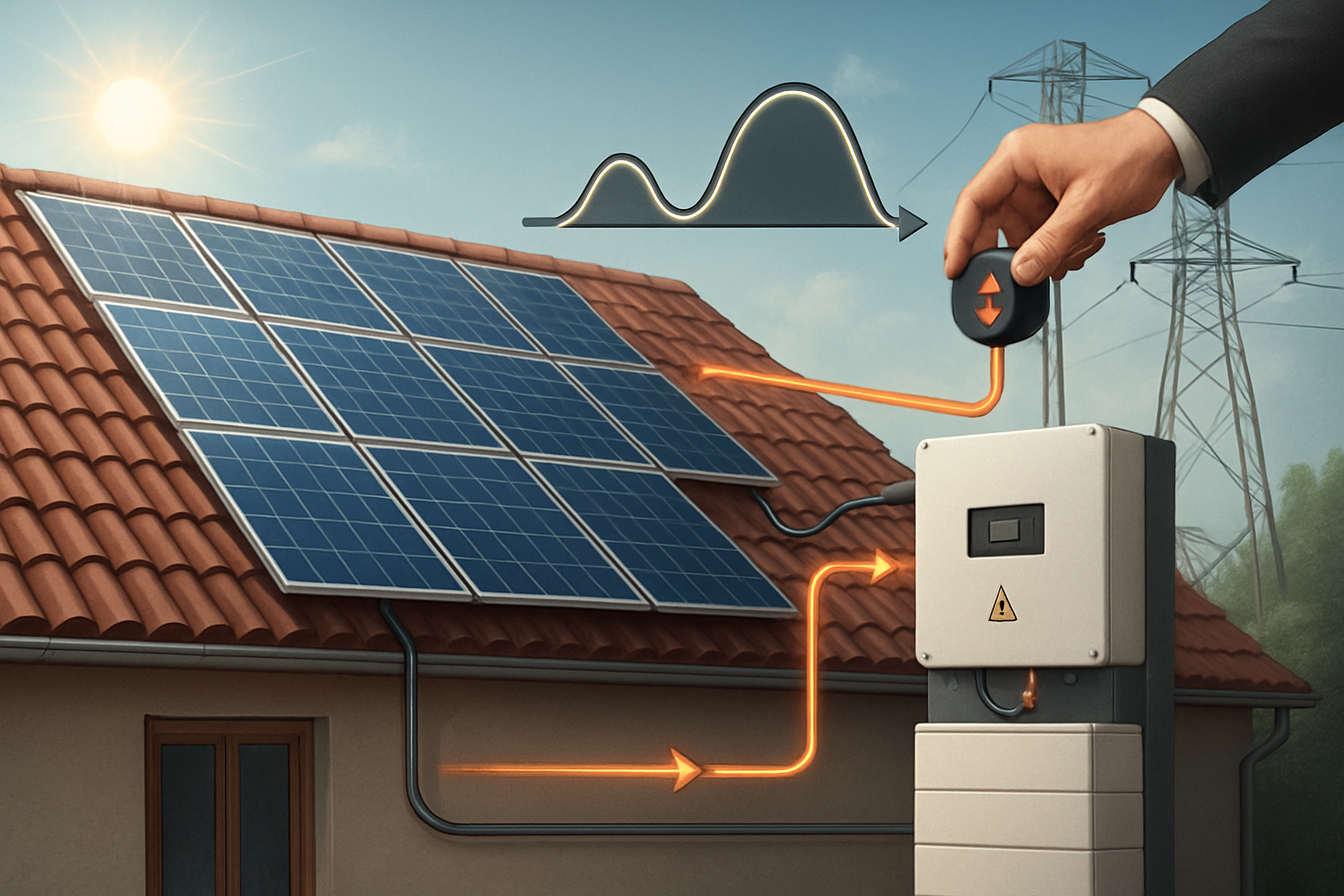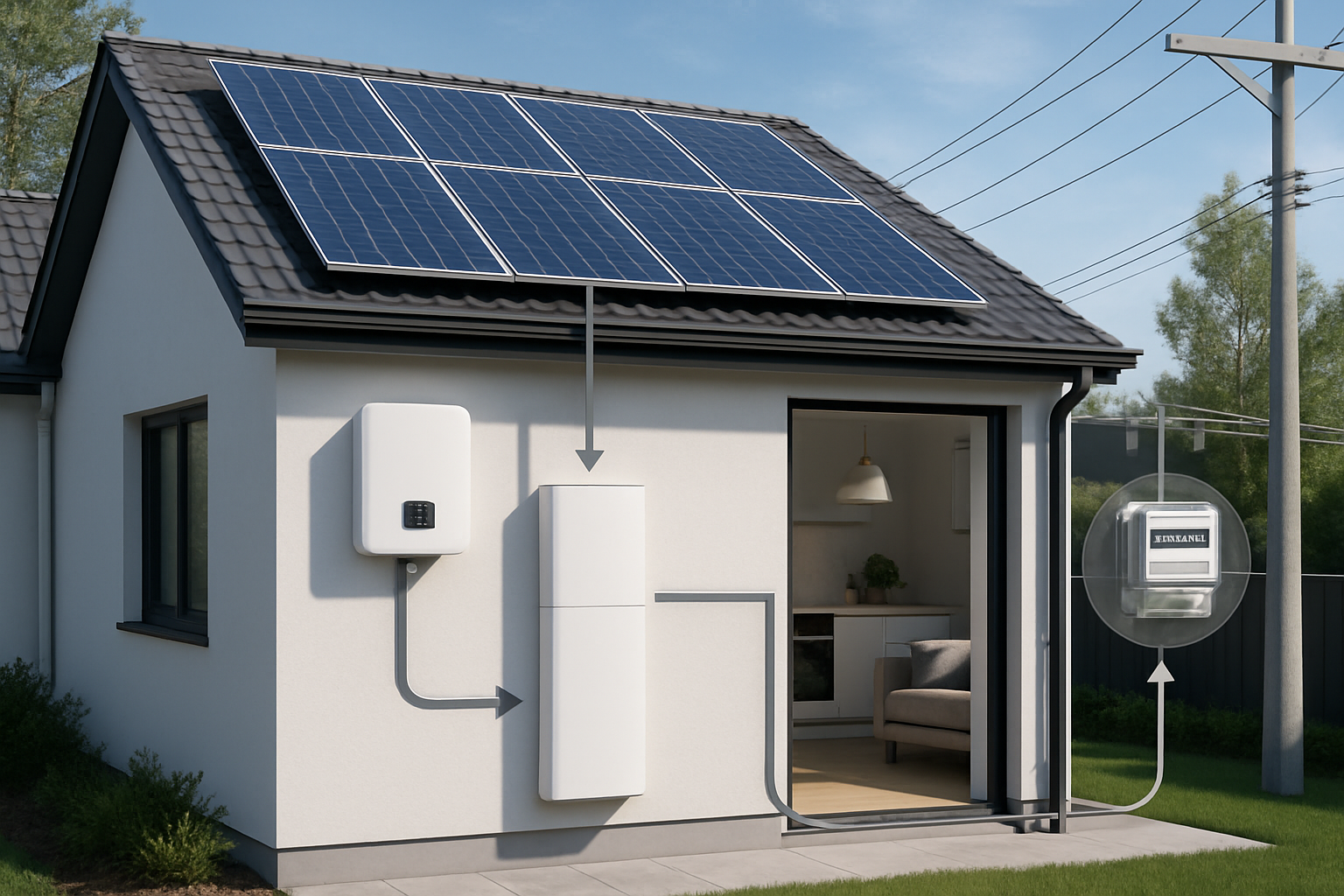Maximizing returns from your solar energy system involves a careful balance of design choices. Two critical factors in this equation are clipping losses and DC oversizing. While they appear contradictory, understanding their interplay is crucial for optimizing energy production and achieving a faster payback on your investment. This article provides a detailed look into these concepts, helping you make informed decisions for your solar setup.
Understanding the DC/AC Ratio
The DC/AC ratio, also known as the Inverter Loading Ratio (ILR), represents the relationship between the direct current (DC) power capacity of your solar panel array and the alternating current (AC) output capacity of your inverter. You calculate it by dividing the PV array’s DC power (in kW) by the inverter’s AC power (in kW). For example, a 12kW DC array paired with a 10kW AC inverter results in a DC/AC ratio of 1.2 .
Historically, designers aimed for a 1:1 ratio. However, real-world conditions mean solar panels rarely produce their nameplate capacity due to factors like temperature, soiling, and the sun's position . An optimal DC/AC ratio typically ranges between 1.2 and 1.4, though it can vary based on local climate, equipment costs, and project goals .
Exploring Solar Clipping Losses
Clipping losses occur when your solar panels generate more DC power than your inverter can convert into AC power . The inverter, designed with a maximum AC output, limits the power when the DC input exceeds its capacity. This effectively flattens the peak of the daily power production curve .
What Causes Clipping?
Clipping is most common during peak sunlight hours, usually between noon and 3 PM, especially on clear, sunny days . While it may seem like a design flaw, it is often a deliberate strategy in system design. Modern inverters can manage this by dialing down DC power, which helps prevent stress on components .
Quantifying Energy Loss
While clipping means losing some potential energy, the loss is often minor compared to the overall gains from oversizing . For instance, a well-designed system might experience clipping for an hour or two on sunny days, accounting for a small percentage of total energy generated . Accurately estimating clipping losses requires high-resolution data, as hourly averages can overestimate production .
The Strategy of DC Oversizing
DC oversizing involves installing a solar array with a higher DC capacity than the inverter's AC rating. This approach allows the system to harvest more energy during periods of lower solar irradiance, such as mornings, evenings, or cloudy conditions .
Benefits Beyond Peak Hours
A larger solar array can still produce sufficient DC power to maximize the inverter's output even when sunlight is less intense . This ensures the inverter operates at or near its full AC capacity for longer durations throughout the day, leading to greater annual energy production . According to the IEA's Next Generation Wind and Solar Power report, a PV plant with a higher DC/AC ratio can run at full capacity more often than one with a lower ratio, gaining extra energy production during shoulder hours despite larger clipping losses during peaks .
Optimizing the DC/AC Ratio
The optimal DC/AC ratio balances increased energy harvest from oversizing against the losses from clipping. Many experts suggest a range between 1.2 and 1.4 as ideal . For example, a solar plant in California, designed with a 1.3 DC/AC ratio, achieved a 12% increase in annual energy production with only 2% clipping losses, demonstrating strong economic returns . However, excessively high ratios (above 1.5) can lead to higher clipping losses and potentially reduce inverter lifespan due to prolonged high-power operation .
Economic Payback: Weighing Clipping Against Oversizing
The financial viability of DC oversizing hinges on whether the increased energy yield from extended production outweighs the energy lost to clipping. With falling solar panel costs, adding more DC capacity has become more cost-effective .
Calculating the Payback Period
The payback period is the time it takes for your solar savings to equal your initial investment . You calculate it by dividing the net system cost (after incentives) by your annual electricity bill savings . For example, if a system costs $20,552 after incentives and saves $2,895 annually, the payback period is about 7.1 years . Factors like local electricity rates and available incentives significantly influence this period .
Case Study: Residential versus Commercial Systems
Investment decisions for solar systems vary between residential and commercial applications. Residential projects often consider factors like median income, electricity rates, and solar irradiation . Commercial projects, however, typically evaluate costs based on internal rate of return (IRR) using a 30-year cash flow analysis to determine the payback period .
For residential systems, a slightly higher DC/AC ratio can ensure consistent energy supply, reducing reliance on the grid during off-peak hours. Commercial systems might push for higher ratios to maximize specific yield and reduce the levelized cost of electricity (LCOE), especially when project size is constrained by AC capacity . For instance, utility-scale projects in the U.S. often use DC/AC ratios between 1.20 and 1.35 .
Here is a simplified comparison of potential outcomes with different DC/AC ratios:
| DC/AC Ratio | Typical Clipping Loss | Shoulder Hour Gain | Overall Impact on Annual Yield |
|---|---|---|---|
| 1.0 | Minimal to None | Low | Suboptimal inverter utilization |
| 1.2 - 1.3 | Low (1-2%) | Moderate to High | Significant increase in annual production |
| 1.4 - 1.5 | Moderate (2-4%) | High | Further increase in yield, but diminishing returns |
| >1.5 | Higher (4%+) | High, but potential for inverter stress | Risk of reduced inverter lifespan, less efficient gains |

Enhancing System Performance with Energy Storage
Integrating energy storage systems (ESS) can further optimize the benefits of DC oversizing and mitigate clipping losses. When your solar array produces more power than the inverter can handle, a battery system can capture this excess DC energy instead of letting it clip .
Integrating Batteries for Optimal Returns
Our company specializes in lithium iron phosphate (LiFePO4) batteries and integrated ESS solutions that combine these reliable batteries with hybrid inverters and solar panels. These systems store surplus solar energy, making it available for use during peak demand, at night, or when solar production is low. This not only reduces curtailment but also enhances self-consumption and energy independence.
Real-World Impact
By storing clipped energy, you transform what would be a loss into usable power. This strategy ensures you maximize every watt your panels generate, leading to greater overall energy independence and a more robust return on your solar investment. Battery storage costs have significantly declined, falling by 93% from 2010 to 2024, making these solutions increasingly attractive .
Final Thoughts on Maximizing Solar Investment
Strategic DC oversizing, coupled with a clear understanding of potential clipping losses, is a powerful approach to enhancing solar system performance and accelerating payback. While some energy loss from clipping is unavoidable with this strategy, the gains from increased production during non-peak hours often far outweigh these losses. Careful design, informed by site-specific conditions and economic goals, is key to finding the optimal DC/AC ratio for your system. Integrating energy storage further refines this balance, ensuring you capture maximum value from your solar assets and move closer to true energy independence.
Frequently Asked Questions
What is DC oversizing?
DC oversizing involves installing a solar panel array with a higher DC power rating than the AC power rating of its inverter. This design choice aims to maximize energy harvest throughout the day, especially during periods of lower sunlight, even if it means some power is 'clipped' during peak production.
How do clipping losses affect my solar system's efficiency?
Clipping losses occur when the solar array produces more DC power than the inverter can convert to AC, causing the excess power to be lost. While these losses reduce instantaneous efficiency during peak production, they are often a small percentage of total annual production and are typically offset by increased energy generation during off-peak hours due to oversizing .
Can energy storage eliminate clipping losses?
Energy storage systems can significantly reduce or effectively eliminate clipping losses. When the solar array produces more power than the inverter can handle, the excess energy can be diverted and stored in batteries instead of being lost. This stored energy can then be used later, increasing overall system efficiency and self-consumption.
What is a good DC/AC ratio for a solar system?
The ideal DC/AC ratio typically falls between 1.2 and 1.4 for most solar systems . However, the optimal ratio depends on various factors, including local climate, irradiance levels, equipment costs, and specific project objectives. Consulting with a solar design expert can help determine the best ratio for your unique circumstances.





Leave a comment
All comments are moderated before being published.
This site is protected by hCaptcha and the hCaptcha Privacy Policy and Terms of Service apply.